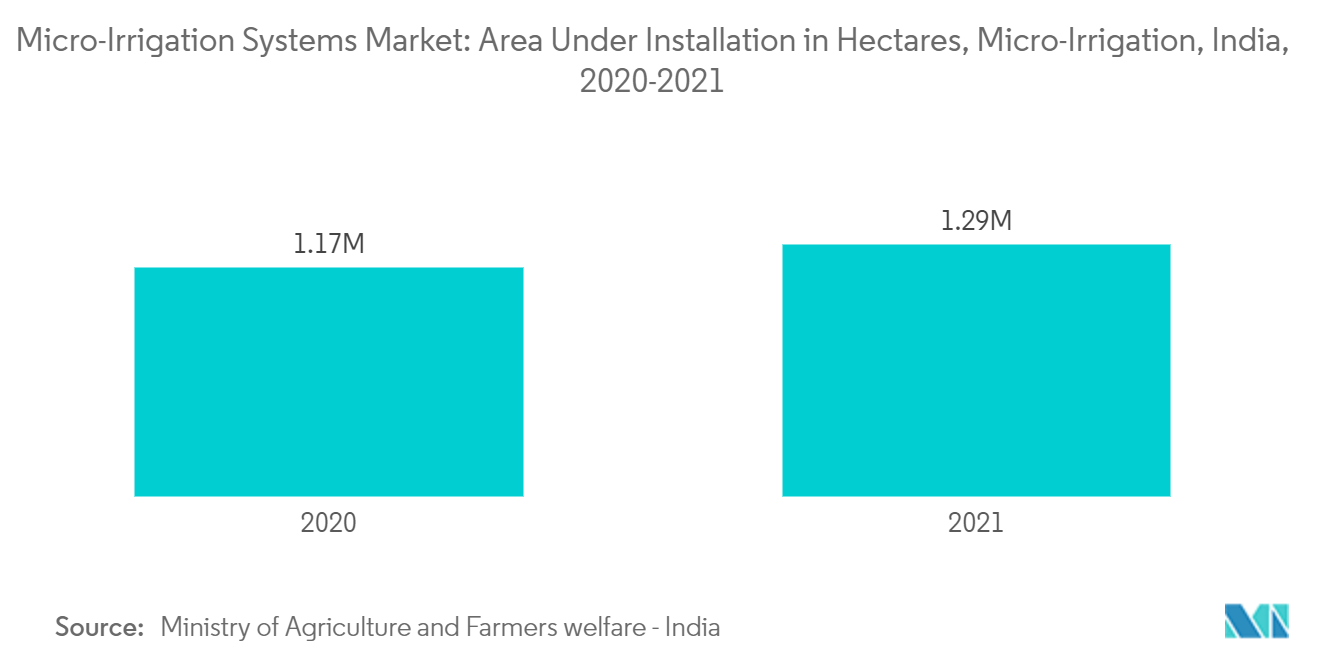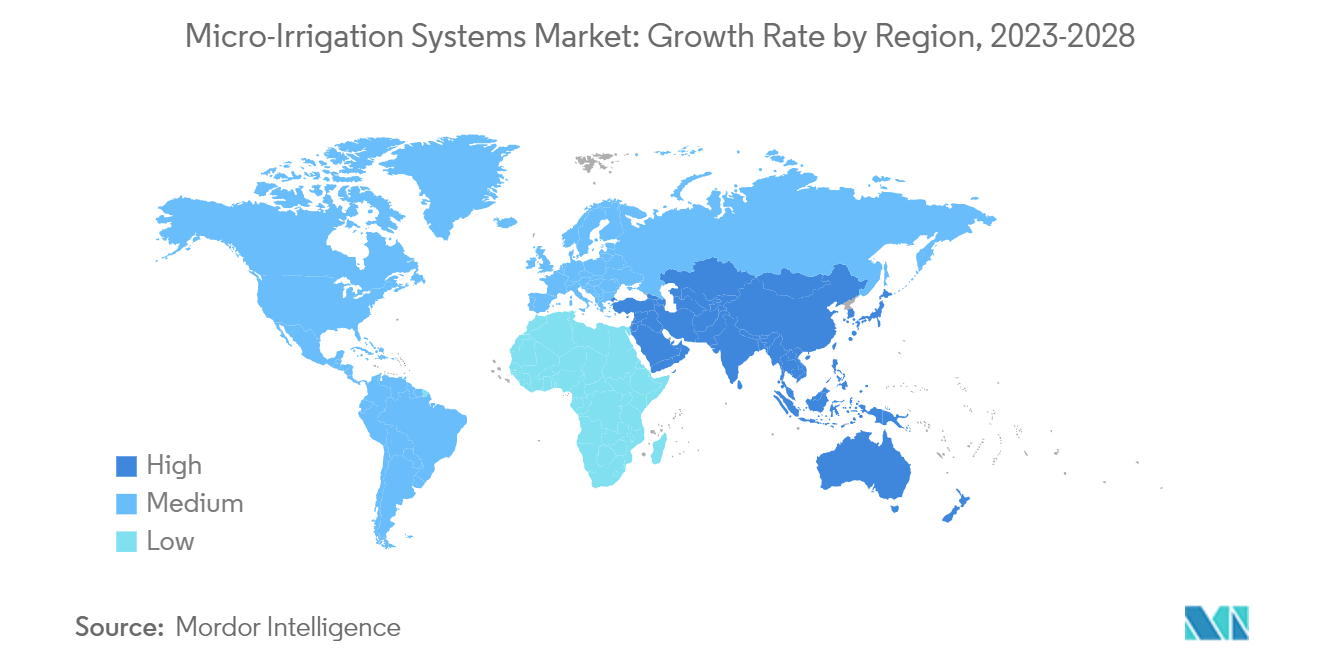Market Trends of Micro-Irrigation Systems Industry
This section covers the major market trends shaping the Micro-Irrigation Systems Market according to our research experts:
Agricultural Water Scarcity Pushing Farmers Toward the Adoption of Micro Irrigation
- The micro-irrigation systems market is primarily driven by the need to increase crop productivity while addressing water scarcity issues. Thus, governments are focusing on formulating initiatives to increase the usage of micro-irrigation systems while limiting water shortage. With water increasingly becoming a scarce commodity, farmers have been seeking novel ideas to grow more crops with the same quantity of water.
- Governments across the world are providing schemes for the installation of micro irrigation systems. For instance, the central and state governments are promoting micro-irrigation technologies (MI) in India by providing different kinds of financial, institutional, and technical support, increasing the area under micro-irrigation globally.
- Micro-irrigation systems, including sprinklers and drippers, are witnessing high demand, which is expected to augment the market's growth. A major challenge has been in designing them. There is a need to consider several aspects, such as how much water would be required, the layout, capacity, and size of the water pipe networks, and the number of sprinklers and drippers that need to be deployed.
- The Indian Agricultural Research Institute (IARI) developed a new system called the design of a micro-irrigation system (DOMIS). It is a web-based application that helps design customized micro-irrigation systems for efficient water utilization under different agro-climatic conditions. The institute plans to develop devices that utilize low amounts of water to help farms.
- The global population and the demand for food have increased significantly over the past few years. Sprinkler and drip irrigation systems provide limited quantities of water to farms with minimal wastage compared to conventional gravity flow irrigation.

Asia-Pacific is the Fastest-growing Market
- China is one of the leading manufacturers of micro-irrigation system components in the Asia-Pacific region. China exports micro-irrigation system components to many countries. Its exports are further expected to grow in the future. The Asian Development Bank (ADB) is encouraging small farmers in China to use micro-irrigation.
- Furthermore, India is largely dependent on rainfed agriculture. The use of a micro-irrigation system may help the Indian agricultural sector reduce its dependence on rain and increase productivity. The most popular technologies used in India are drip irrigation and sprinkler irrigation. Drip irrigation has the highest market share in India.
- The Indian government approved micro-irrigation coverage by doubling the Micro Irrigation Fund (MIF), created in collaboration with the National Bank for Agriculture and Rural Development (NABARD), to USD 1.32 billion in 2021-2022. This fund is registered under the Pradhan Mantri Krishi Sinchayee Yojana (PMKSY).
- Apart from China and India, countries such as Vietnam, Korea, Bangladesh, and Pakistan continue to have large market shares. Farmers are investing in high-technology irrigation systems like drip and sprinklers due to the increasing water scarcity and to reduce input costs.


